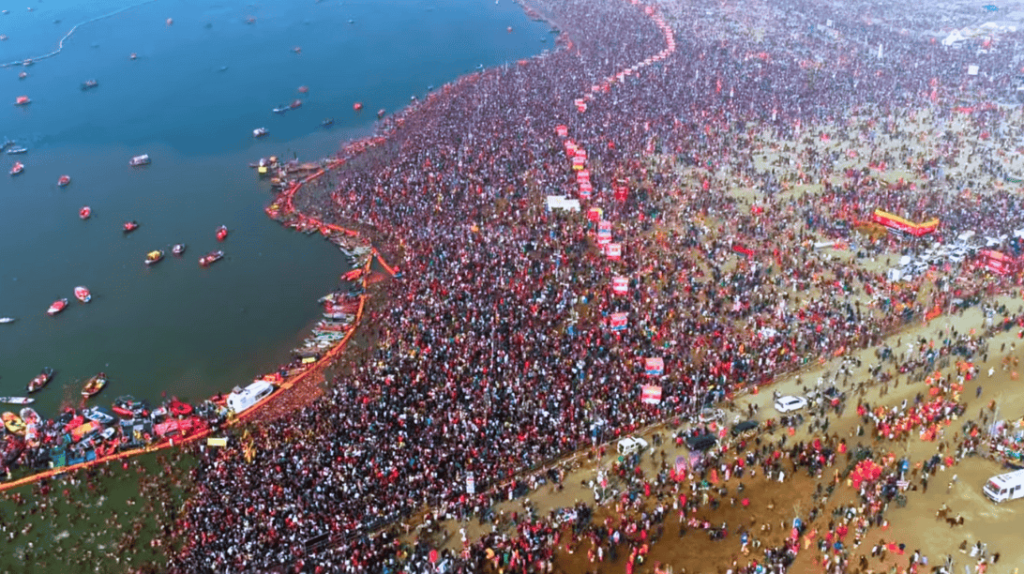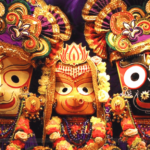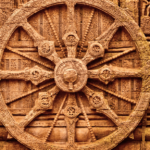
Also known as Vinayak Chaturthi, is one of the most vibrant and joyous festivals celebrated across India, particularly in Maharashtra. This festival honors Baghwan Ganesh, the beloved elephant-headed deity, known as the remover of obstacles, the god of wisdom, prosperity, and new beginnings. It is a time of devotion, creativity, community bonding, and cultural celebration.
Historical Origins
The origins of Ganesh Chaturthi date back to ancient India, with references to Ganesh appearing in sacred texts like the Rigveda and Puranas. Baghwan Ganesh is revered as the son of Baghwan Shiv and Devi Parvati, and his iconic elephant head symbolizes power, wisdom, and the ability to overcome challenges. The festival itself is said to have been celebrated during the reign of Chhatrapati Shivaji Maharaj, the great Maratha ruler, who kept the cultural values alive despite invasions and destructions by the Mughals, Nizams and other invaders.

However, Ganesh Chaturthi as we know it today took its current form in the late 19th century, when freedom fighter Lokmanya Tilak transformed it into a public festival. Under British colonial rule, public gatherings were discouraged, but Tilak saw Ganesh Chaturthi as an opportunity to unite people in a common cause—Indian nationalism. By organizing large, community-wide celebrations, Tilak made Ganesh Chaturthi a symbol of resistance against British rule. These public festivities were not only about devotion but also about empowering Indians and building a sense of national identity.
The Festival
Each year, Ganesh Chaturthi is observed on the fourth day of the Hindu lunar month of Bhadrapada (August–September), marking the birth of Baghwan Ganesh. The festival lasts for 10 days, beginning with the installation of Ganesha idols in homes and public pandals and culminating in the immersion of the idols in water during the ceremony of Visarjan.
The first day of Ganesh Chaturthi is marked by the arrival of elaborately crafted Ganesha idols.

Artisans spend months creating these idols from clay, plaster, and eco-friendly materials, with each idol embodying different forms of Ganesha, from the simple and humble to the grand and majestic. Devotees bring these idols home or to public pandals with great enthusiasm, accompanied by the beating of drums, songs, and chants of “Ganpati Bappa Morya!”
Once the idol is installed, a priest performs the pranapratishtha ritual, invoking life into the statue, followed by the shhodashopachara—16 forms of homage, which include prayers, offerings of sweets, flowers, and incense. The famous sweet modak, a favorite of Ganesha, is prepared and offered during the festival.
The Days of Devotion
For the next 10 days, devotees gather around the idols, performing aartis, singing bhajans, and offering prayers. The air is filled with devotional songs, and each evening the idols are adorned with flowers and colorful garments. Public pandals host cultural events like music and dance performances, plays, and community feasts, creating an atmosphere of celebration and togetherness.

One of the key aspects of Ganesh Chaturthi is its focus on community. Neighbors come together to share in the preparations, children and adults participate in artistic activities, and local artisans are supported through the purchase of handmade idols. It is a festival that brings people closer, fostering unity and goodwill.
The Visarjan
The 10-day festival concludes with Ganpati Visarjan, the ritual immersion of the Ganesha idols in water. As the final day approaches, the streets come alive with large processions. Devotees dance, sing, and shout praises of Lord Ganesha as they carry the idols to rivers, lakes, or the sea for immersion. The symbolism here is profound—Ganesha, having blessed his devotees, now returns to his cosmic abode, with the promise to return the following year.

The act of immersion also reminds people of the cycle of creation and dissolution, a key tenet in Hindu philosophy. While the physical form of Ganesha is dissolved, his divine presence remains, promising prosperity and the removal of obstacles in the future.
Modern Relevance
Today, Ganesh Chaturthi remains one of the most popular and widely celebrated festivals in India, especially in Maharashtra, Karnataka, Tamil Nadu, and Andhra Pradesh. In cities like Mumbai, Pune, and Hyderabad, public pandals can be massive, hosting Ganesha idols that are several feet tall, attracting millions of devotees. The festival has even spread to other parts of the world, celebrated by Indian communities in countries like the USA, UK, and Australia.
In recent years, there has also been a growing focus on celebrating Ganesh Chaturthi in an eco-friendly manner. Traditionally, idols were made from clay that dissolved naturally in water, but with the commercialization of the festival, idols made of plaster of Paris and other non-biodegradable materials became common, causing environmental damage to water bodies. To counter this, many communities have turned to using clay idols and adopting sustainable practices during the festival, ensuring that the celebration remains in harmony with nature.

Ganesh Chaturthi is not just a religious festival; it is a celebration of life, community, and the belief that no obstacle is too big to overcome with wisdom and perseverance. Whether it’s through the public celebrations that bring people together or the personal prayers made at home, Lord Ganesha’s presence is a guiding force, reminding us all to approach life with patience, faith, and the strength to overcome whatever challenges lie ahead.
Each year, as devotees chant “Ganpati Bappa Morya, Pudhchya Varshi Lavkar Ya!” (“O Ganesha, come again early next year!”), the spirit of the festival lives on, brightening hearts and homes.







